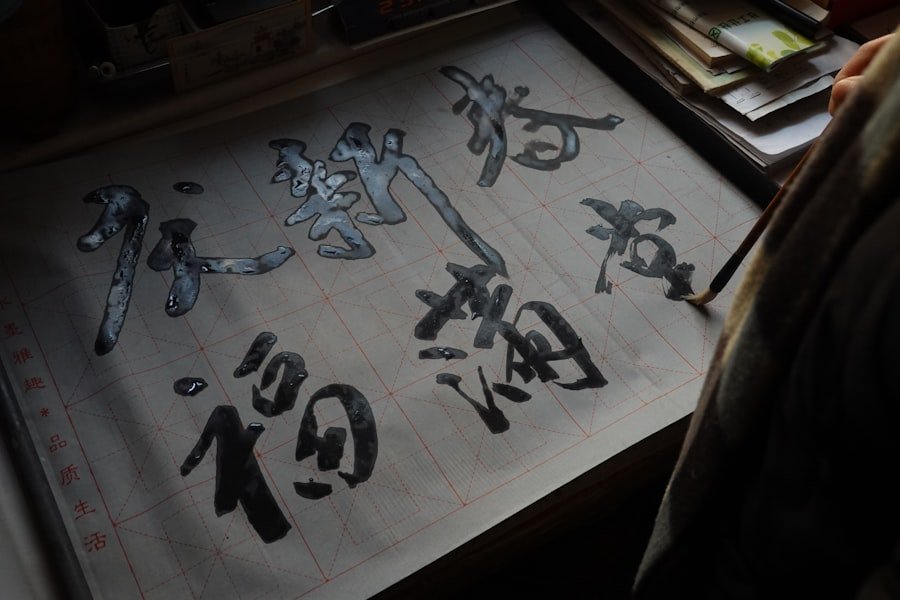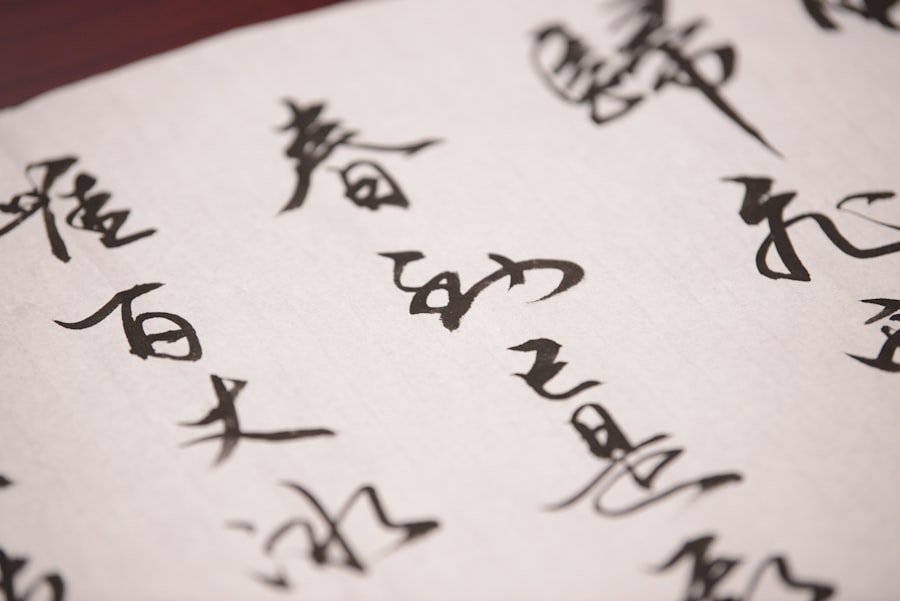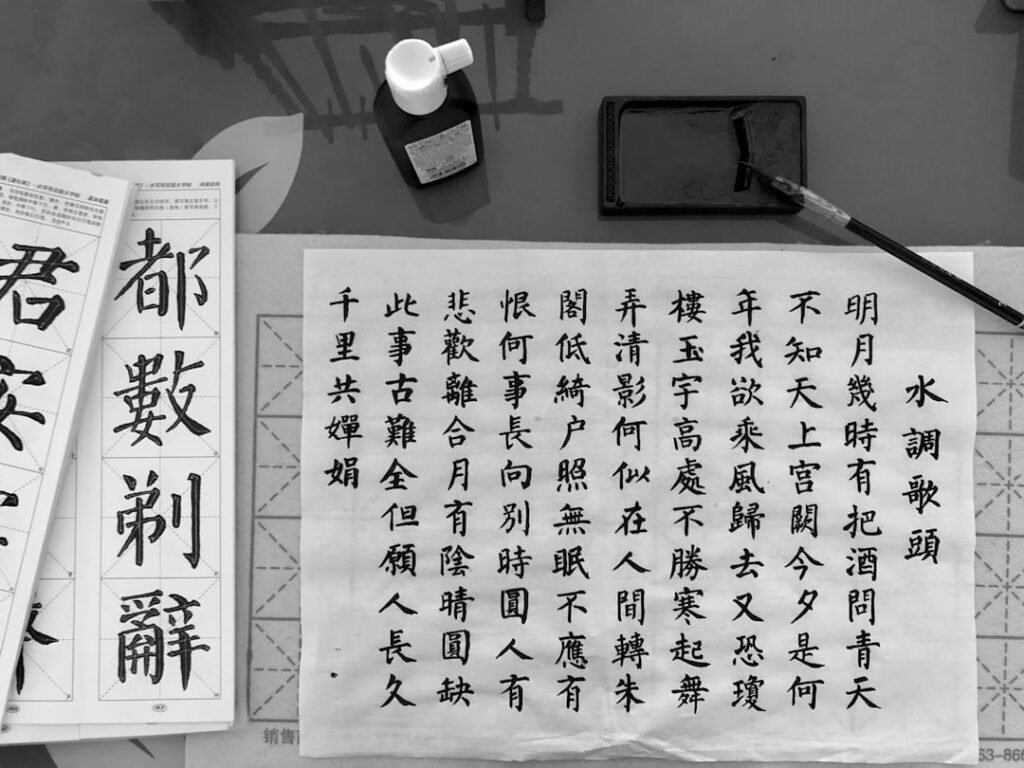The Four Treasures of the Study, known as “文房四宝” (wén fáng sì bǎo) in Chinese, are essential tools that have been revered by scholars and artists for centuries. These treasures consist of the brush, ink, paper, and ink stone, each playing a pivotal role in the practice of Chinese calligraphy. The significance of these tools extends beyond their practical applications; they embody the rich cultural heritage and artistic traditions of China.
As one delves into the world of calligraphy, understanding the Four Treasures becomes paramount, as they not only facilitate the creation of beautiful characters but also connect practitioners to a long lineage of artistic expression. In this article, we will explore each of these treasures in detail, examining their individual characteristics and importance in the art of calligraphy. We will also discuss how these tools have shaped the practice over time and their enduring relevance in contemporary society.
As we embark on this journey through the Four Treasures, we will uncover the beauty and artistry that lies within Chinese calligraphy, inviting both novices and seasoned practitioners to appreciate its depth and complexity. Master the art of Chinese calligraphy. Enroll now at the LC Chinese School in Oslo.
Table of Contents
ToggleSummary
- The Four Treasures of the Study are essential tools for Chinese calligraphy and include the brush, ink, paper, and ink stone.
- The Brush (毛笔, máo bǐ) is a crucial tool for Chinese calligraphy, and mastering its use is essential for creating beautiful characters.
- High-quality ink (墨, mò) is important for producing vibrant and long-lasting calligraphy, and understanding its properties is key to creating stunning artwork.
- Choosing the right paper (宣纸, xuānzhǐ) is essential for achieving the desired effect in Chinese calligraphy, as different surfaces can affect the appearance of the characters.
- The Ink Stone (砚台, yàn tái) is used to grind and mix ink properly, and understanding its use is crucial for creating high-quality calligraphy.
The Brush (毛笔, máo bǐ): A Key Tool for Chinese Calligraphy
The brush, or 毛笔 (máo bǐ), is arguably the most iconic tool in Chinese calligraphy. Its unique design, featuring a flexible tip made from animal hair, allows for a remarkable range of strokes and styles. The brush’s ability to hold ink and create varying line thicknesses is what sets it apart from other writing instruments.
This versatility enables calligraphers to express their emotions and artistic intentions through fluid movements and dynamic forms. The choice of brush can significantly influence the outcome of a piece, with different types of hair—such as wolf, goat, or rabbit—offering distinct textures and effects. When selecting a brush, one must consider factors such as size, shape, and hair type.
Larger brushes are often used for bold strokes and expansive characters, while smaller brushes are ideal for intricate details and fine lines. The balance and weight of the brush also play a crucial role in how it feels in the hand, affecting the calligrapher’s control and comfort during the writing process. As one becomes more experienced, the relationship with the brush deepens, transforming it into an extension of the artist’s own hand.
The Ink (墨, mò): Understanding the Importance of High-Quality Ink

Ink, or 墨 (mò), is another fundamental component of Chinese calligraphy. Traditionally made from soot mixed with animal glue, high-quality ink is essential for achieving rich, deep blacks that enhance the visual impact of calligraphic works. The texture and consistency of the ink can greatly influence how it interacts with both the brush and paper.
A well-prepared ink allows for smooth application and vibrant results, while inferior ink may lead to uneven strokes or fading over time. In contemporary practice, many calligraphers opt for bottled ink for convenience; however, traditional ink sticks remain popular among purists who appreciate the ritual of grinding their own ink on an ink stone. This process not only connects them to centuries of tradition but also allows for greater control over the ink’s consistency and quality.
The choice between bottled ink and traditional ink sticks ultimately depends on personal preference and artistic intent, but understanding the nuances of each option is vital for any serious calligrapher.
The Paper (宣纸, xuānzhǐ): Choosing the Right Surface for Your Calligraphy
The choice of paper is equally important in the realm of Chinese calligraphy. Known as 宣纸 (xuānzhǐ), or Xuan paper, this specialised paper is prized for its absorbency and texture. It is made from a blend of bamboo, hemp, and other natural fibres, resulting in a surface that allows ink to flow beautifully while retaining its vibrancy.
The right paper can enhance the overall aesthetic of a piece, allowing for crisp lines and smooth transitions between strokes. When selecting paper for calligraphy, one must consider factors such as weight, texture, and absorbency. Heavier papers are often preferred for larger works or when using more fluid inks, while lighter papers may be suitable for smaller pieces or delicate brushwork.
Additionally, some calligraphers experiment with different types of paper to achieve unique effects, such as rice paper or handmade papers that offer distinct textures and finishes. Ultimately, the choice of paper is a personal one that reflects the artist’s style and intention.
The Ink Stone (砚台, yàn tái): How to Grind and Use Ink Properly
The ink stone, or 砚台 (yàn tái), serves as a vital tool in the preparation of ink for calligraphy. Traditionally made from stone or ceramic, an ink stone features a flat surface for grinding ink sticks against water to create a smooth paste. This process is not merely functional; it is an art form in itself that requires skill and patience.
The act of grinding ink can be meditative, allowing calligraphers to focus their minds before embarking on their creative journey. To use an ink stone effectively, one must first add a small amount of water to its well before gently rubbing the ink stick against the surface in a circular motion. This method gradually releases the pigment while mixing it with water to achieve the desired consistency.
The quality of the ink produced depends on both the technique employed and the materials used; thus, mastering this process is essential for any serious practitioner. As one becomes more adept at using an ink stone, they will find that it enhances not only their technical skills but also their appreciation for the artistry involved in creating beautiful calligraphy.
The Art of Chinese Calligraphy: Techniques and Styles

Chinese calligraphy is not merely about writing characters; it is an intricate art form that encompasses various techniques and styles. Each style has its own unique characteristics and historical significance, ranging from the fluidity of running script (行书) to the precision of regular script (楷书). Calligraphers often choose a style based on their personal preferences or the message they wish to convey through their work.
Techniques such as brush control, stroke order, and rhythm are fundamental to mastering calligraphy. Practitioners spend years honing their skills through practice and repetition, often studying classical texts to understand the nuances of each character. The beauty of Chinese calligraphy lies in its ability to convey emotion and meaning through visual expression; thus, every stroke carries weight and intention.
As one explores different styles and techniques, they will discover their own voice within this ancient art form.
The Importance of Tradition in Chinese Calligraphy
Tradition plays a crucial role in Chinese calligraphy, serving as both a foundation and a source of inspiration for contemporary practitioners. The art form has evolved over thousands of years, with each generation contributing to its rich tapestry of styles and techniques. Calligraphers often draw upon historical masters for guidance, studying their works to gain insight into their methods and philosophies.
Moreover, traditional values such as discipline, patience, and respect for materials are deeply ingrained in the practice of calligraphy. These principles not only shape the way artists approach their craft but also foster a sense of connection to their cultural heritage. By embracing tradition while also allowing room for personal expression, modern calligraphers can create works that resonate with both historical significance and contemporary relevance.
Building Your Chinese Calligraphy Toolkit: Where to Find Quality Supplies
For those interested in embarking on their own journey into Chinese calligraphy, building a quality toolkit is essential. The Four Treasures—brushes, ink, paper, and ink stones—are readily available from specialised art supply stores or online retailers that focus on traditional Chinese art materials. It is advisable to invest in high-quality tools that will enhance your practice rather than opting for cheaper alternatives that may hinder your progress.
In addition to these core supplies, many calligraphers also find value in supplementary items such as practice books or instructional guides that provide insights into techniques and styles. Joining local workshops or classes can also be beneficial; not only do they offer hands-on experience with expert guidance but they also foster a sense of community among fellow enthusiasts. For those residing in Oslo or nearby areas, LC Chinese School offers exceptional courses in Chinese calligraphy that cater to all skill levels.
These classes provide an excellent opportunity to learn from experienced instructors while immersing oneself in this beautiful art form.
Care and Maintenance of Your Calligraphy Tools
Proper care and maintenance of your calligraphy tools are vital for ensuring their longevity and effectiveness. Brushes should be cleaned thoroughly after each use to prevent ink from drying on the bristles; this can be done by rinsing them gently under running water before reshaping them into their original form. Storing brushes upright in a holder helps maintain their shape while preventing damage.
Ink stones require regular cleaning as well; after use, it is important to wash away any residual ink with water and a soft cloth to avoid staining or deterioration over time. Similarly, keeping your paper stored flat in a cool environment will help preserve its quality and prevent warping or discolouration. By taking these simple steps to care for your tools, you can ensure that they remain in optimal condition for years to come.
The Role of the Four Treasures in Chinese Culture and History
The Four Treasures have played an integral role in shaping Chinese culture throughout history. They have been associated with scholarly pursuits since ancient times when literati would gather to compose poetry or engage in philosophical discussions using these tools. The act of writing was seen not only as a means of communication but also as a reflection of one’s character and intellect.
Moreover, these treasures have transcended their practical applications to become symbols of cultural identity and artistic expression. They are often featured in traditional Chinese paintings or displayed as decorative items within homes or galleries. As such, they serve as reminders of China’s rich artistic heritage while continuing to inspire new generations of artists and scholars alike.
Embracing the Beauty and Artistry of Chinese Calligraphy
In conclusion, exploring the Four Treasures of the Study reveals not only their practical significance but also their profound cultural importance within Chinese society. Each tool—the brush, ink, paper, and ink stone—contributes uniquely to the art form of calligraphy while embodying centuries-old traditions that continue to resonate today. For those eager to delve into this captivating world, courses at LC Chinese School in Oslo offer an excellent opportunity to learn from experienced instructors who can guide you through the intricacies of this ancient art form.
Whether you are a complete novice or an experienced practitioner looking to refine your skills, embracing Chinese calligraphy opens up a realm of beauty and artistry that transcends language barriers and connects us all through shared creativity.
Master the art of Chinese calligraphy. Enroll now at the LC Chinese School in Oslo.







